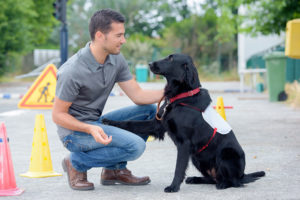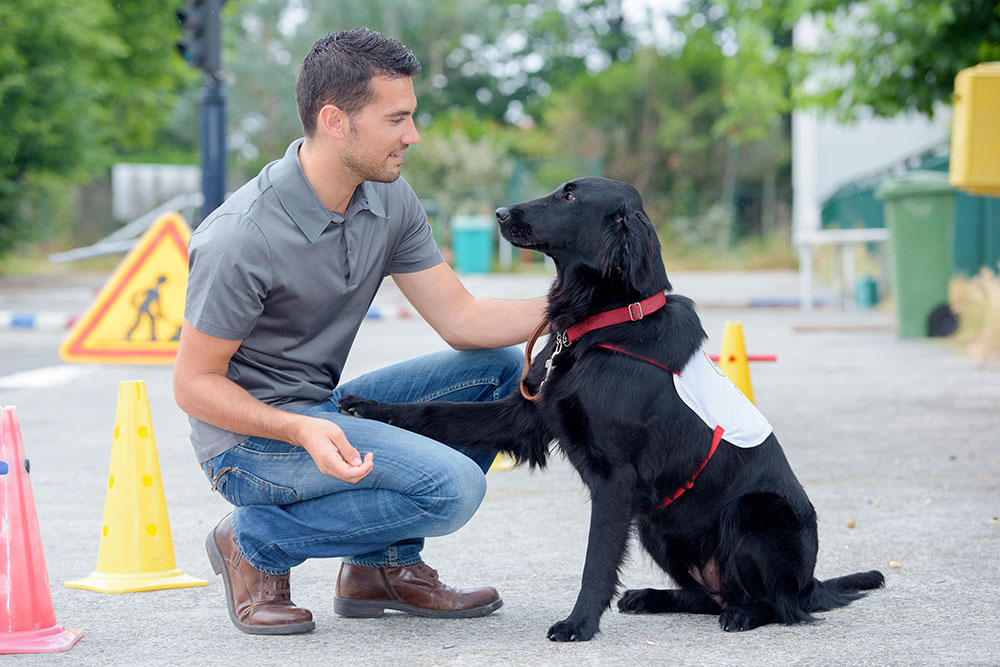Disclaimer: The information on our website is provided for general information purposes only. We make no representations or warranties of any kind, express or implied, about the completeness, accuracy, reliability, suitability or availability with respect to the website or the information contained on our website for any purpose. Any reliance on such information is therefore strictly at your own risk and we are not liable for any damages or losses arising out of or resulting from your reliance on any information contained on our website.
An animal trainer provides obedience training, security training, service animal training, or even works with animals for competitions or the entertainment industry. They may also teach animals to respond to work in a pack team, as well as to carry pack loads. They familiarize an animal to human commands and human contact.
Watch the following video to learn what an animal trainer does:
How to Become an Animal Trainer
According to O*Net Online, most animal trainers have a high school diploma or some college. However, to become an animal trainer, no degree is required. Employers may look more favorable on a candidate with some vocational training or certification or a few years job experience.
You can also become a dog trainer for the U.S. Customs and Border Protection (CBP). You can visit cbp.gov (link opens in a new tab) to learn about training patrol agents can attain to learn about canine behavior. Next, the CBP offers additional dog training for various purposes such as special response and tracking. With experience, an agent can become trained to become a Canine Instructor.
Job Description of an Animal Trainer

Animal trainers typically interact with animals to help them become familiar with human voice and contact. They teach them to respond to signals or cues by providing training programs to develop certain animal behaviors. He or she may provide general care of the animals they work with as well, such as exercising and feeding. Animal trainers oversee the animals’ health and physical condition in order to recommend medical care when necessary. They may give medications to animals and keep recorded documentation of the animals’ behavior, health, or diet. They must also evaluate animals so that they can gain knowledge of the abilities, temperaments, or aptitude of each animal for training.
There are also benefits to being an animal trainer. Animal trainers can work independently or for an animal training business. Many animal trainers enjoy the flexibility of their schedules and working outside most of the time. Many animal trainers though would say the most significant benefit is the joy of working with our furry friends. They LOVE their jobs!
Free Teacher and Student Resources
Wageningen University and Research offers a free Introduction to Animal Behavior course on EdX.org (link opens in a new tab) with the option to pay a small fee receive a verified certificate upon completion of the course.
By taking this course, you’ll learn:
- Key concepts to understand animal behavior.
- The fascinating range and complexity of behavior in animals.
- How scientific hypotheses are developed and tested.
- How animals learn and communicate.
- Animals’ reproductive behavior.
- How animals function socially.
Arizona State University offers a free Dog Behavior: Problems and Solutions course on EdX.org (link opens in a new tab) as well with the option to pay a small fee receive a verified certificate upon completion of the course.
- How to use a behavioral approach to a behavioral problem.
- The method of behavioral functional analysis.
- How to assess what is reinforcing for dogs.
- How to critically assess different methods of dog training.
- What temperament tests are and what they are used for.
Animal Trainer Career Video Transcript
People love animals, and animals are even more lovable when they’re well-trained. Professional animal trainers teach animals new behaviors, whether it’s for a search and rescue operation, therapeutic horseback riding, performances, or simply training a puppy not to jump up onto visitors. Birds, monkeys, and most often, dogs, may be trained to assist individuals who are deaf, blind or mobility-impaired.
Trainers use different techniques, but the simplest is rewarding the correct action with food or praise. A love of animals may lead you to this field, but patience and good communication are essential, as is the willingness to handle the unglamorous care and upkeep of animals. The work can be physically strenuous, especially with large animals. Entry into this field may be through vocational training programs or apprenticeships.
The more exotic jobs in venues such as movies or TV, zoos, and research facilities may require a bachelor’s degree and specialized skills such as SCUBA diving. The pay is generally low. Many trainers also find work at kennels, stables, and grooming services to supplement their income.
Article Citations
- Bureau of Labor Statistics, U.S. Department of Labor, Occupational Outlook Handbook, Animal Trainers.
- National Center for O*NET Development. 39-2011.00. O*NET OnLine.

